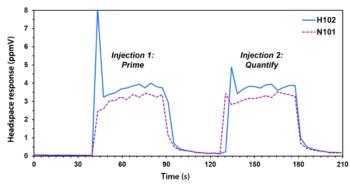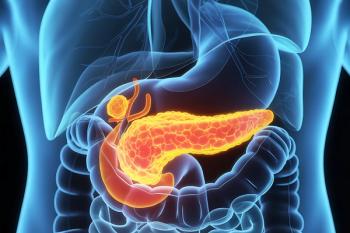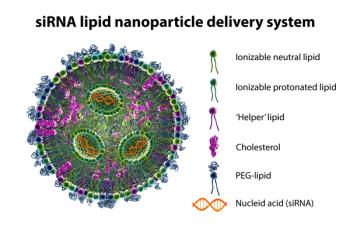
Prioritizing Non-Target Screening in LC–HRMS Environmental Sample Analysis
When analyzing samples using liquid chromatography–high-resolution mass spectrometry, there are various ways the processes can be improved. Researchers created new methods for prioritizing these strategies.
University of Copenhagen researchers recently developed prioritization strategies for non-target screening in environmental samples. Their findings were published in the Journal of Chromatography A (1).
Environmental pollution from anthropogenic chemicals poses a major threat to environmental and human health (2). Profiling chemicals of emerging concern (CECs) in complex environmental samples is vital for addressing this challenge. Target screening is the most widely used approach for monitoring known pollutants, and while it is effective for routine monitoring and regulatory compliance, the technique is limited to compounds with available reference standards.
Non-targeted analysis (NTS) addresses chemical-related adverse effects often missed by target screening methods. Many cases of ecotoxicity in wastewater and unexplained disease patterns cannot be addressed using known target compounds, and NTS aims to detect, identify, and track unknown and emerging contaminants. This provides much broader coverage, unlike target screening, which can only cover small fractions of the chemical space. As such, NTS is viewed as a strong tool for revealing overlooked CECs and providing valuable insights for better risk assessment and regulatory decisions.
The most used analytical method for NTS of water samples is liquid chromatography (LC) with high-resolution mass spectrometry (HRMS). This stems from its broad compound coverage, high separation efficiency, and strong identification capabilities. NTS workflows are meant to address specific researcher questions, with preprocessing being vital to detect certain features, such as mass-to-charge ratio (m/z) and retention time (RT), group related features, and remove unreliable data. However, thousands of reliable features per sample remain after these processes.
In this tutorial, seven prioritization strategies were presented:
- Target and suspect screening for identifying known or suspected compounds using reference libraries.
- Data quality filtering to apply quality control measures to reduce noise and the number of false positives.
- Chemistry-driven prioritization using HRMS data properties to prioritize specific compound classes (halogenated substances, transformation products).
- Process-driven–sing spatial, temporal, or process-based comparisons (pre- and post-technical processes) to identify key features.
- Effect-directed analysis (EDA) and virtual effect-directed analysis (vEDA) prioritization to link chemical features to biological effects.
- Prediction-based prioritization such as quantitative structure-property relationships (QSPR) and machine learning (ML) to estimate risk or concentration levels.
- Pixel- or tile-based analysis where the chromatographic image (2D data) is used to pin-point regions of interest or for comparison of larger sample sets.
Prioritization is used to efficiently narrow down detected features to ones that need further identification, significantly improving overall workflow. Using these prioritization strategies, according to the scientists, provides structured foundations for evaluating identified and unidentified features. Further, high-risk compounds can be prioritized while environmental risk assessment and regulatory decision-making are advanced.
As an example, target and suspect screening can serve as an initial prioritization step when relevant suspect lists are available. This process can be refined further by integrating process-driven prioritization to assess temporal or treatment-related patterns. Meanwhile, pixel-based prioritization can be a broad and data-driven way to highlight chromatographic regions of interest before using EDA-driven approaches to focus on toxicologically relevant compounds. Each method comes with advantages and limitations, but when integrated with each other, they can strengthen the overall prioritization process.
However, there are still challenges with this. High-quality and standardized data sets are vital for ensuring reproducibility and comparability across studies. Computational demands can also be an issue, specifically for ML and exposure modeling approaches that require large data sets and extensive processing power. Overall, prioritization strategies are critical for managing the complex nature of NTS chemical data. By adopting flexible and scalable workflows that can integrate multiple approaches, researchers can improve identification efficiency, enhance environmental risk assessment, and allow for more targeted regulatory decision-making.
References
(1) Zweigle, J.; Tisler, S.; Bevilacqua, M.; Tomasi, G.; et al. Prioritization Strategies for Non-Target Screening in Environmental Samples by Chromatography – High-Resolution Mass Spectrometry: A Tutorial. J. Chromatogr. A 2025, 1751, 465944. DOI:
(2) Schwarzenbach, R. P.; Egli, T.; Hofstetter, T. B.; et al. Global Water Pollution and Human Health. Annu. Rev. Environ. Resour. 2010, 35, 109–136.
Newsletter
Join the global community of analytical scientists who trust LCGC for insights on the latest techniques, trends, and expert solutions in chromatography.





